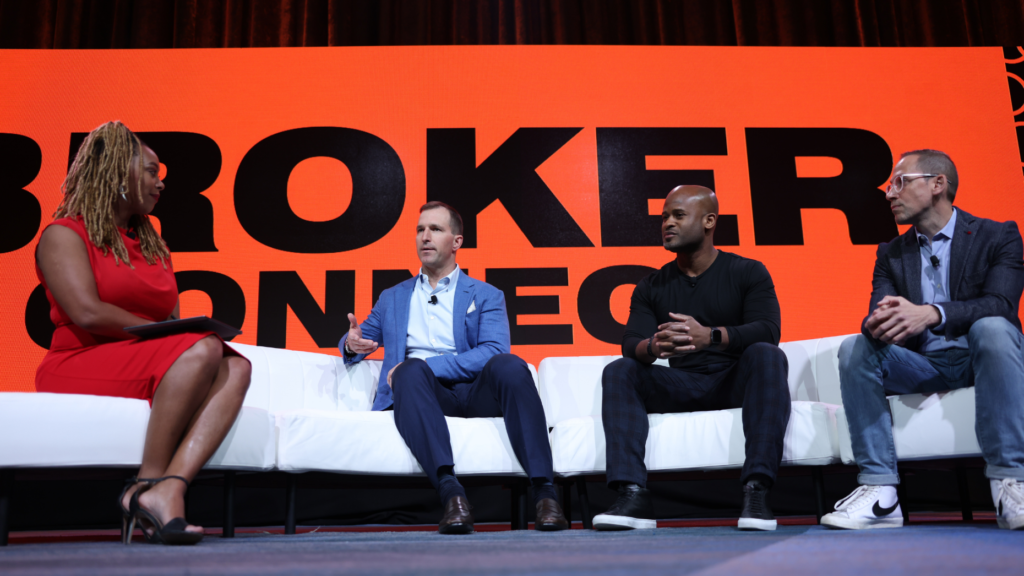Inman events are the best way to connect, learn and grow. Don’t miss the next one, August 3-5 at Inman Connect Las Vegas! Get your ticket now for the best price.
The top factor that those seeking to acquire brokerages should consider is culture, according to panelists at Inman Connect New York on Wednesday.
Remembering her first acquisition, panel moderator Jemila Winsey, CEO at ERA Legacy Living in Houston, said she’d considered market share and other financial and performance indicators, but neglected to take culture into consideration.
“It was very painful trying to integrate because we really didn’t align there,” she told attendees in a session called How To Determine The True Valuation Of Your Brokerage. “And even though it still worked out, it was still a very painful process.”
Panelists Lee Ann Roughton, vice president of franchise performance at ERA Franchise Systems, and Natalie Hamrick, executive vice president of Americas at Christie’s International Real Estate, said culture was paramount.
“It’s everything,” said Hamrick, who was intimately involved with @properties acquisition of Christie’s International Real Estate late last year.
“It’s No. 1,” Roughton, who weighs acquisitions for ERA on a daily basis, said. “Because if that is in alignment, you can work through the other pieces of putting the deals together. If that’s not right, the breakage is going to be an incredible at-risk factor you need to work very closely at.”
Still, performance indicators and how those indicators compare to the market overall are also important, according to the panelists. Roughton said she hones in on a brokerage’s profitability when considering an acquisition.
“While size definitely comes into play in a transaction, it’s really more about what that profit margin looks like and peeling that back,” she said.
“A lot of times what we see with more smaller firms, as an example, the owner may be a big part of what you’re seeing, at least from the top-line profit. But really kind of working toward that more adjusted profit line would be an example of why you may see a valuation look different for a small-size versus a mid-size [brokerage]. And then [with] larger companies, the enterprise levels, having ancillary services and those things play a huge role in that.”
Asked what a typical valuation multiple would be, Roughton said she was seeing ranges between three and six, which she described as “a little on the aggressive side.”
Size is a big factor, according to Hamrick.
“Typically, the larger the brokerage, the higher the multiple,” she said. “In most cases with larger brokerages, you have smaller risks because with those smaller brokerages, let’s say you lose a ton of agents. That’s going to greatly and swiftly impact your value. So you need to look at other things. You need to look at retention rates, location, market opportunity is a big one for us.
“If they have a ton of market share, then obviously you’re interested in them for their success.”
But on the other hand, if a brokerage is stagnant and not growing, that could be an opportunity for the acquiring company to plug in something to help the brokerage grow and scale up, she added.
“If you see a firm and [realize], ‘Gosh, if they just had this tech (whatever you have that they don’t) that could be a win-win for everyone,’” she said.
Diversification is also really important, according to Hamrick. “If you’re in multiple locations and you have varying income streams, you will command a higher multiple,” she said.
Acquiring companies should look at what each side is bringing to the table, according to Roughton.
“Especially if they have market share, but perhaps aren’t doing a great job in the profit arena, what are the things that could change the outlook of that that would make a big difference?” she said.
Having a view of recruiting and retention over time at the brokerage is also super important, Roughton added.
“They may look good now, but what has that historically looked like?” she said.
The panelists also cautioned that each side, whether a buyer or a seller, should be prepared for bumps in the road.
“Not all deals are going to work and they’re not always easy,” Roughton said. “They take time. Expand your audience on either side, if you’re looking to buy or if you’re looking for that acquisition strategy, look for opportunities.”
Buying companies should also prepare to pitch themselves, according to Roughton.
“Have your package together as opposed to the seller driving the questions and asking you for things,” she said. “If you have your package together and you can present your company in a way that is attractive then the ultimate outcome would be more profitable for you as a potential buyer.”
Quoting M&A expert Steve Murray, Hamrick said that companies without an organic strategy in place to grow should not do acquisitions.
“He meant don’t substitute acquisitions for your inability to grow organically,” she said.
She also advised that buyers and sellers should have all their ducks in a row before diving into the market.
“Time kills all deals,” she said. “We had this brokerage we were really interested in, and they just could not get us information. While we were waiting for documents to come over, to really analyze their financials, they lost a ton of agents, and we walked away from the deal.
“Get your business organized and ready before you seek an acquisition, so you know your worth and you’re able to move quickly.”
Lastly, Hamrick advised that brokerages looking to sell think about what makes them unique and valuable as well as their plans for the future.
“We always look at company trends, are you trending in the right direction?” she said. “Are you forward-thinking? Tech is big to us. Do you have a plan in place? Can you show a two-, five-, 10-year roadmap? Do you have a strategy? I think that’s also key.”
Email Andrea V. Brambila.
Like me on Facebook | Follow me on Twitter



 Are You Interested in West Eleventh Residences Miami?
Are You Interested in West Eleventh Residences Miami? Are You Interested in ONE Park Tower by Turnberry?
Are You Interested in ONE Park Tower by Turnberry? Are You Interested in Diesel Wynwood Condominium?
Are You Interested in Diesel Wynwood Condominium? Are You Interested in Five Park Miami Beach?
Are You Interested in Five Park Miami Beach? Are You Interested in Cipriani Residences Miami?
Are You Interested in Cipriani Residences Miami? Are You Interested in Bentley Residences Miami?
Are You Interested in Bentley Residences Miami? Are You Interested in Baccarat Residences Brickell?
Are You Interested in Baccarat Residences Brickell? Are You Interested in Aria Reserve Miami?
Are You Interested in Aria Reserve Miami? Are You Interested in 888 Brickell Dolce & Gabbana | Miami?
Are You Interested in 888 Brickell Dolce & Gabbana | Miami? Are You Interested in 600 Miami WorldCenter?
Are You Interested in 600 Miami WorldCenter? Are You Interested in HUB MIAMI RESIDENCES?
Are You Interested in HUB MIAMI RESIDENCES? Are You Interested in WALDORF ASTORIA RESIDENCES?
Are You Interested in WALDORF ASTORIA RESIDENCES?